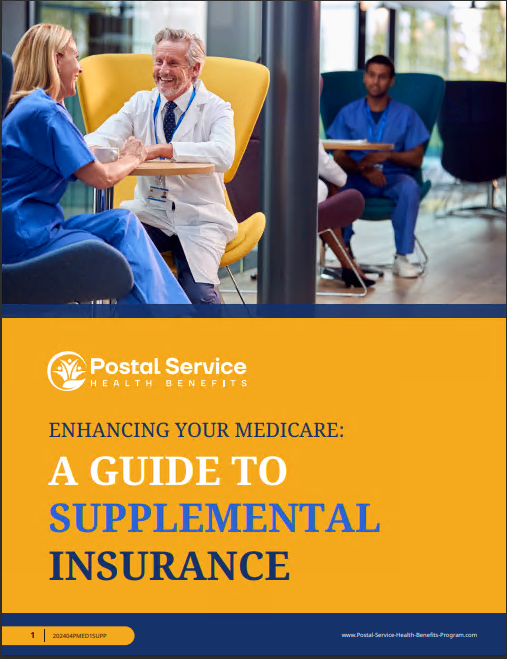Key Takeaways
- The 2024 PSHB open season is a vital period for USPS employees and retirees to review health plans and make decisions for upcoming changes in 2025.
- Be proactive during open season to ensure your coverage meets your family’s healthcare needs, particularly with new Medicare integration rules for retirees.
Ready for PSHB Open Season? What You Need to Know Before Making Your Choice
As we head into the 2024 PSHB open season, USPS employees and retirees must be ready to make important decisions about their healthcare coverage for 2025. The Postal Service Health Benefits (PSHB) Program will be replacing the current Federal Employees Health Benefits (FEHB) Program for these groups starting on January 1, 2025. This is a significant change, and it’s essential to be well-prepared to make the best choices during the open season period, which runs from November 11 through December 9, 2024. The decisions you make during this time will ensure that you and your family have the right coverage for the future.
The new PSHB Program, established under the Postal Service Reform Act of 2022, is a response to the unique needs of USPS employees and retirees. While many of the same insurers from FEHB will offer PSHB plans, there are critical differences that will affect your choice. Here’s everything you need to know to be ready for open season.
What is the PSHB Program?
The Postal Service Health Benefits (PSHB) Program is a new branch of the Federal Employees Health Benefits (FEHB) Program, designed specifically for postal workers, retirees, and their families. The PSHB will go into effect in January 2025, replacing FEHB for USPS employees and annuitants. This new structure is intended to better reflect the healthcare needs and cost-sharing requirements specific to USPS employees, which differ from those of the broader federal workforce.
Though many aspects of PSHB will look familiar to those already enrolled in FEHB, the key difference lies in the creation of a separate risk pool for postal workers. This new pool could lead to changes in premium structures, available plan options, and specific coverage details, making it more important than ever to carefully evaluate the options available to you during the 2024 open season.
Why the Transition Matters
With the transition to PSHB, 2025 will bring about several important changes in the healthcare landscape for USPS employees. Although automatic enrollment will be in place for many people, the changes in plan structure and Medicare requirements make it crucial for you to take an active role in reviewing your options. Auto-enrollment could place you in a plan that might not meet your individual healthcare needs, so this year’s open season is your best opportunity to ensure you have the right coverage.
Understanding Automatic Enrollment
For the majority of USPS employees and retirees, automatic enrollment into a PSHB plan will occur if no action is taken during the open season. However, the automatic enrollment will not necessarily place you in the plan that is best for your situation. The default auto-enrollment option will be the lowest premium nationwide plan available that is not a high-deductible health plan. This may not align with your specific healthcare needs, especially if you have existing conditions, preferred providers, or family coverage needs.
Therefore, even though automatic enrollment is designed for convenience, you should still take the time to review the available options and make an active choice to ensure that the selected plan is the best fit for you and your family.
Medicare and the PSHB Program
A significant change with the PSHB program involves the integration of Medicare for USPS retirees. If you are a Medicare-eligible retiree (age 65 or older), you will be required to enroll in Medicare Part B to maintain PSHB coverage starting in 2025. This is a departure from the previous FEHB rules, where enrolling in Medicare Part B was optional.
For those who are eligible for Medicare but have not yet enrolled in Part B, a Special Enrollment Period (SEP) is available from April 1 through September 30, 2024. This period allows retirees to enroll in Medicare Part B without incurring late enrollment penalties. However, those who delay and enroll after this period could face penalties, potentially increasing their overall healthcare costs. Retirees should take this requirement seriously, as failing to enroll in Medicare Part B will result in the loss of PSHB coverage.
This requirement, however, does not apply to all USPS retirees. Those who retired before January 1, 2025, or are 64 years of age or older at the start of 2025, are exempt from this requirement. However, any family members of these retirees who are Medicare-eligible will still need to enroll in Part B to retain PSHB coverage.
How to Make the Best Choice for 2025
The key to making the best choice during the PSHB open season is to evaluate your personal and family healthcare needs in relation to the available plan options. Here are the main factors to consider when choosing a PSHB plan:
1. Healthcare Needs
Take a close look at your current and future healthcare needs. If you expect to need specialized treatments, surgeries, or ongoing medications, it’s important to ensure that your chosen plan covers these services. Check the plan’s provider network to make sure your preferred doctors and specialists are included. If you have a chronic condition, choosing a plan with strong specialist networks is essential.
2. Family Coverage
If you have dependents, their healthcare needs should also guide your decision. Some plans offer more comprehensive family coverage than others, and life events—such as a child turning 26—can affect your coverage needs. Be sure to choose a plan that accommodates the healthcare needs of all your family members, including access to pediatricians, family doctors, and specialists.
3. Prescription Drug Coverage
For those who rely on prescription medications, it’s crucial to understand how your PSHB plan handles drug coverage. Check the formulary list to ensure that your medications are covered and review the out-of-pocket costs associated with them. Some plans may offer different tiers for prescription coverage, which can affect your overall costs.
4. Cost Considerations
Although we cannot discuss specific premiums, deductibles, or copays, you should review the overall cost structure of your plan. Look at not only the monthly premiums but also the cost-sharing aspects like deductibles and copayments for office visits, hospital stays, and prescription drugs. Consider the total out-of-pocket maximums to determine which plan is the most financially viable for your situation.
The Importance of Early Review and Action
Given the significant changes coming in 2025, it’s critical that you don’t wait until the last minute to review your options. Start early by exploring the plan materials available in October 2024. These documents will help you compare benefits, provider networks, and cost structures across different plans. Many tools will be available to assist you in making an informed decision, including plan comparison tools provided by OPM.
Additionally, consulting with a licensed insurance agent can provide personalized guidance tailored to your unique healthcare needs. This is especially important if you have complex healthcare requirements or are managing care for multiple family members.
Planning for the Future
The decisions you make during the 2024 PSHB open season will have a lasting impact on your healthcare coverage in the coming years. With changes in Medicare integration, automatic enrollment, and the shift to a separate risk pool for postal workers, it’s essential to stay informed and take proactive steps during this critical period.
If you are a retiree approaching Medicare eligibility, take special note of the new Part B requirements and enroll during the Special Enrollment Period to avoid penalties. For current employees, reviewing family coverage and ensuring your healthcare needs are met by your selected plan will help you avoid unexpected costs and coverage gaps in 2025.
Get Ready for PSHB Open Season and 2025 Coverage
The 2024 PSHB open season presents a pivotal opportunity for USPS employees and retirees to make the best decisions for their healthcare needs. With automatic enrollment in place, Medicare requirements for some retirees, and various plan options to choose from, it’s essential to be proactive in reviewing your options. By understanding the changes ahead and planning accordingly, you can ensure you have the right coverage for 2025 and beyond.






